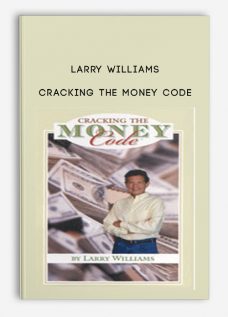- Description
Description
Swing Trade Pro 2.0 – PivotBoss
**More information:
Get Swing Trade Pro 2.0 – PivotBoss at bookoftrader.com
Description
Filesize : 2.58 GB
SWING TRADE PRO 2.0
STP 2.0: THE 5-STEP SWING TRADING BLUEPRINT
Swing Trade Pro 2.0 is a powerful 5-step course that will teach you how to profit from the swings of the market like a professional trader, from managing risk to setup and strategy selection. STP 2.0 will teach you how to find and trade high probability opportunities from our proven trade sequences, and will show you how to execute expert entries into the market, while learning to manage risk like a professional. In just 10 short hours, this training will teach you concepts and techniques that you can utilize for a lifetime of successful active trading and investing.
1
STEP 1: EXECUTION | Set your risk parameters
Before you can place a trade, you’ll first want to understand how much you want to risk. In Step 1, you’ll learn about proper trade allocation, and will also learn how to use the Risk Management Matrix to calculate risk while you trade.
2
STEP 2: TRADE SEQUENCES | Find trading opportunities
After you know how much you want to risk, Step 2 will teach you how to find trading opportunities. You’ll learn how to use 9 trading blueprints to find high probability trading opportunities in any market.
3
STEP 3: STRATEGY TOOLKIT | Choose a trading strategy
Once you find a setup you want to trade, it’s time to choose a trading strategy. In Step 3, you’ll learn 13 easy-to-understand options strategies that will help you engage multiple types of markets and manage the risk of multiple types of positions.
4
STEP 4: EXECUTION | Execute the strategy
Once you’ve decided on a strategy, it’s time to execute. In Step 4, you’ll learn five pro-style execution techniques for triggering entries and managing exits. This step will teach you how to skillfully add and remove risk exposure in the market.
5
STEP 5: DOCUMENTATION | Document and review the results
Successful traders learn from previous mistakes, and look to reinforce strengths. In Step 5, you’ll learn best practices for documenting your positions and the importance of review.
Includes:
20 Hours of OnDemand Training
135-Page Swing Trade Pro 2.0 PDF
Includes 9 Trading Blueprints
Includes the Risk Management Matrix
100% Money Back Guarantee
You Will Learn How To:
Find quality trading opportunities in any market using our day type and trade sequence blueprints
Identify the best entry points for each day type and trade sequence
Execute entries at the best trade location
Manage your risk, increasing and decreasing exposure like a professional
Select the right options strategy for the opportunity you want to trade
Protect long term positions and investments using options
Produce consistent income from long term positions using simple options strategies
100% Money Back Guarantee
This is a RISK FREE offer, with a 30-day 100% money-back guarantee…No questions asked.
Universal Trading Methodology
STP 2.0 teaches a universal methodology to engaging the market, which means this approach can be used to participate in all timeframes, from day trading to swing trading to active investing, and in any instrument class, including stocks, ETFs, futures, and crypto.
Use Any Trading Platform
STP 2.0 provides training that can be universally applied to the market, and thus can be used regardless of the trading platform you are currently using.
Forex Trading – Foreign Exchange Course
Want to learn about Forex?
Foreign exchange, or forex, is the conversion of one country’s currency into another.
In a free economy, a country’s currency is valued according to the laws of supply and demand.
In other words, a currency’s value can be pegged to another country’s currency, such as the U.S. dollar, or even to a basket of currencies.
A country’s currency value may also be set by the country’s government.
However, most countries float their currencies freely against those of other countries, which keeps them in constant fluctuation.










